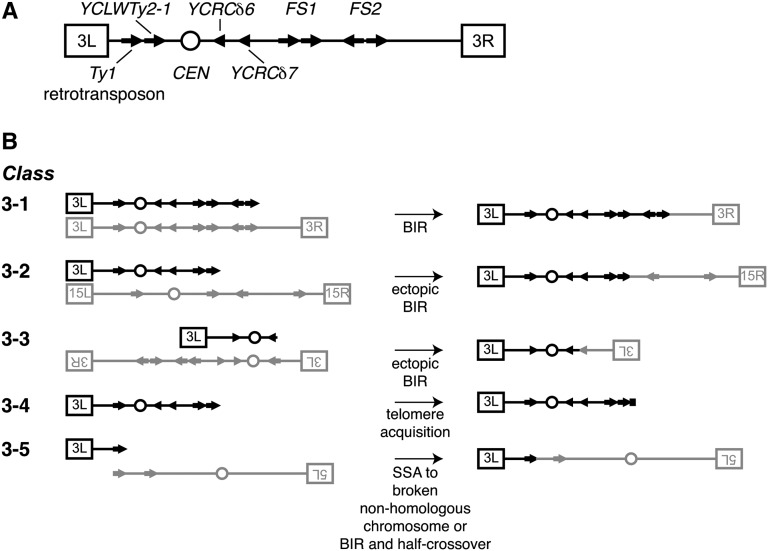Figure 5 .
Mechanisms of repair in replication deficient mutants. (A) Schematic of boundaries of rearrangement that occur on chromosome III of replication mutants are shown. (B) Following a double stranded break and resection to Ty retrotransposons (arrows) or δ long terminal repeats (triangles), chromosome fragments can be repaired in illegitimate diploids through several mechanisms. Class 3-1: Chromosome III is repaired by BIR using the homologous chromosome of the tester strain. Class 3-2: Ectopic break-induced replication (BIR) mediated by strand invasion at a Ty retrotransposon on a nonhomologous chromosome XV of the tester strain (gray) yields nonreciprocal translocations. Class 3-3: Ectopic BIR involving strand invasion at a different locus of chromosome III results in shortened fragments of chromosome III with two left arms. Class 3-4: Chromosome III fragments are directly repaired by telomere acquisition. Class 3-5: Chromosome fusions can be created through single stranded annealing (SSA) of chromosome III and chromosome V fragments with boundaries at Ty retrotransposons or through a BIR and half-crossover event.

